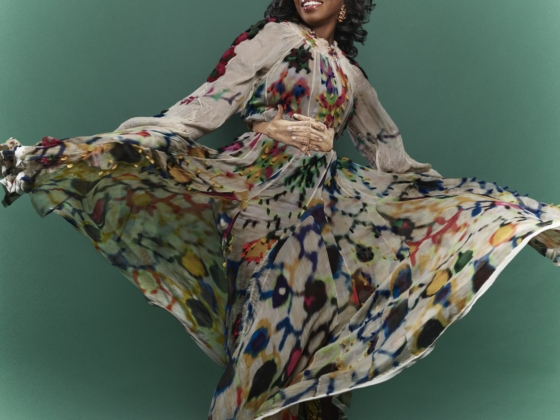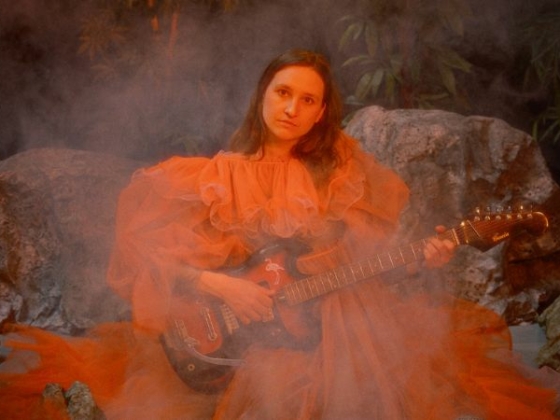If there's one thing that living in the actual future has brought us, it's the blurring of lines. No, I don't mean the thoroughly messed Robin Thicke song that I weirdly still remember, although that song's appropriationist leanings do kind of prove my point. Musicians are more comfortable dabbling across genres to make something new. Not every hybrid ends up an unequivocal success (although I'm really, really sad crunkcore never took off), but since removing the paradigms of genre has given us alt-RnB, big room trap, and emo Kanye West, it's pretty safe to say that rewarding artists for breaking convention is a pretty good move. This sort of post-modern blurriness hasn't just been limited to the boundaries between genre, however – lately, as computer software lowers the barrier to entry for basically every kind of art, musicians have seized the opportunity to jump across to different mediums and snatch up new modes of creation as well. Music isn't just music anymore – anyone can make a video, anyone can make a website, anyone can make a cool liner insert full of deep quotes and extremely good poetry. The listening experience is increasingly becoming tied to other complementary forms of media experience.
Of course, that got my post-humanist self thinking about the possibility of an Entertainment Singularity. In the future, artists could make media that included music, images, storytelling, video, any kind of art. I became so excited, imagining the possibility of the amazing world to come. Then I sat down to play some X-Com and I realized that the Entertainment Singularity already kind of exists. It's called "video games."
I know, I know, I don't wanna get in to the whole "IS VIDEO GAME ART????" thing. I think video games can be art and, for the purposes of this article, we're going to go with that. If you disagree, there are already enough impassioned defenses of the video game as art form available online so go read 'em if you must. Knock yourself out – literally please.
Are they all knocked out? Alright, us enlightened souls can now continue.
See, video games started out as solely functional things. They still can be very functional – I mean, Republican Power Fantasy 4: the Shootening is going to be fun to play with your friends so you can live out your secret desire of blasting them with military-grade munitions, but pure wish fulfillment can only go so far as an artistic statement. However, a weird thing started happening – some people found a way of making the tools used to create multimedia games way more accessible. Suddenly, you could make a game on your home computer with very little prior experience. Suddenly, people who weren't part of huge corporate teams, people who were often at the very margins of society, started making these weird game things.
Sounds familiar, right? Nowadays, people are making games and making music in basically the same way – by themselves, on a computer, doing pretty much everything on their own, with an auteur's eye. While the end products are somewhat different (although one often includes the other), the processes are so similar that I believe it's worthwhile to look at one to learn about the other. Just as video games have been art-ified, or music-ified, music too has become gamified to a surprising degree.
Music has been overtly borrowing from video games in an aesthetic sense for years. There's the obvious chiptuney stuff that is overtly trying to capture the sound and feel of old video game soundtracks, but the level of entanglement is far greater than that. Sounds from games show up everywhere as samples – much of early UK dubstep and grime owes a debt to the sounds of Sony and Sega. I mean, Burial's "Archangel," which is actually considered one of the greatest songs ever, is a fancied-up version of a Metal Gear Solid cutscene (check the sample at 1:39 in the video below), and guess what – it sounds great! However, Burial's frequent use of sounds snagged from Metal Gear is in fact great evidence that games have exerted far greater of an impact on tunes than the simplistic adoption of early games' characteristic 8-bit (or 16, or 32) bleeps and bloops. The structure and composition of tracks meant for games has also found traction among music producers.
[youtube]https://www.youtube.com/watch?v=IlEkvbRmfrA[/youtube]
[youtube]https://www.youtube.com/watch?v=zvpmPuxg16k[/youtube]
This has mainly happened in two ways. First, I would argue that the repetitive and recursive nature of the kind of music that usually gets described as "beats" owes a debt to video game music, itself which is designed to be contextual, easily repeatable, and played in the background. Consequently, it's no surprise that the genres in which we most often see video game samples (see grime, dubstep, hip-hop) fall under the "beat" paradigm of construction rather than under the "song" paradigm. However, this first avenue of influence seems to me to be more a consequence of the second, and biggest, way in which music has been influenced by games: music, at the level of consumption, is now largely designed to be listened to while looking at a screen.
While playing a video game, the music is usually peripheral – not in the sense that it is unimportant or meant to be ignored, but rather that it is part of a whole instead of serving as the focal point. You look at what's happening on a screen and the music happens in the background. But this isn't so different from how you or I listen to music, right? We throw on a EP off of Soundcloud and then tab over to Facebook to focus on all the cool Buzzfeed articles our high school sort-of- friends constantly post. When we want to hear a specific song, we search for it on YouTube and pull up the music video. The coolest of us might listen to some embedded music added to help illustrate the points in a well-written article from EARMILK.com. But listening to music by itself, without browsing the internet or watching a music video or reading or working, just listening – it happens but it's no longer the dominant mode of consumption.
When you're designing music for the screen it follows, counterintuitively to how composition is usually said to work, that the music should not vie for the center of the listeners attention – how many times have you been working, reading or writing with music on, only to switch to something without lyrics, something less intrusive, so that you could concentrate better? If the presence of the screen problematizes the consumption of music that demands to be the foreground, then our entire method of screen-based mass consumption is flawed. Might some songs, which are incompatible with a format of delivery which emphasizes peripherality, be getting ignored?
This is not to say that digital delivery methods for music are intrinsically flawed. On the contrary, basic quality-of-life stuff that would have been unthinkable or at least very difficult pre-computer music boom, like being able to skip around a song to see if you like it or to even be able to look at a waveform, mean that there's definitely a place for screen-based consumption. It still needs to be noted that our screen-based method of delivery has the problematic side effect of relegating music to the background, but because of the countless other improvements which come as trappings of the screen, it's unlikely that we'll abandon this delivery channel.
Well, you could be super alt and avoid it by recording your album on ~*AlL aNaLoG gEaR*~ and subsequently doing a super limited vinyl-only release to all of the other employees at the Nerd Store, where you work. But instead I'm thinking we should be more like music-influenced game designers instead of game-influenced musicians. Now, I'm not asking musicians to brush up on their C++ and start making video games (but if you do, send 'me to me and I'll play 'em!). I only want to encourage musicians to think of their music within the context of a greater multimedia environment – if your listener is going to be looking at a screen, why not take advantage of the opportunity – why not control what's on it!
Some of the most innovative musicians around right now are already on this – you could do worse than follow in the footsteps of Death Grips and Beyoncé, who both released "visual albums" in 2013. Of course, their visuals are starkly different but that's kind of the point – when musicians take advantage of the expanded multimedia spectrum which surrounds their music, they can use that opportunity to create the perfect listening environment for their music. By controlling the screen that the listener is looking at, the musician can return their song to the center stage rather than consign it as a background soundtrack to Facebook.
[youtube]https://www.youtube.com/watch?v=lUmIkVMdjVY[/youtube]
If there's one thing I wish to impart, to both the listeners and creators of all this awesome music, it's that more goes in to the listening experience than is quantifiable in a play counter on Soundcloud. The delivery system is a huge part of that, and it is at the point of delivery were the gamification of music, somewhat synonymous with the computerization of music, has had it's most significant impact. Speaking of Soundcloud, we'll return next week to discuss "RPG Funk," play counts and how music production might really be just one big game. Until then, keep enjoying your screen.











